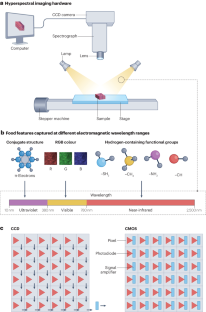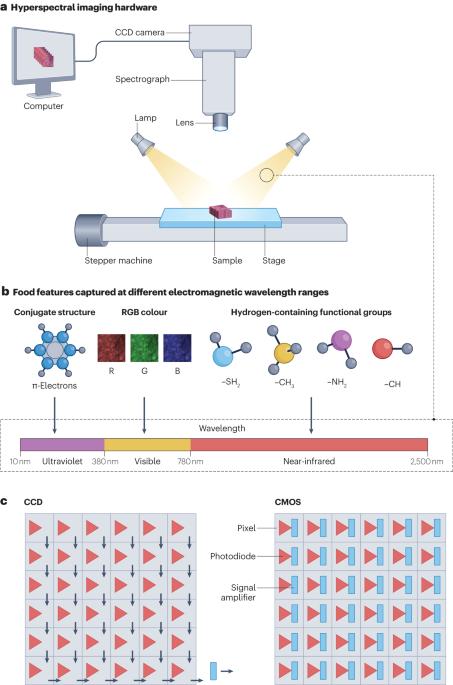Applications of hyperspectral imaging technology in the food industry
引用次数: 0
Abstract
Emerging issues related to food quality include the need to ensure food safety, detect adulteration and enable traceability throughout the food supply chain. Such issues must be addressed to ensure the quality, hygiene and nutritional value of food, and thereby safeguard the health and interests of consumers. Hyperspectral imaging, which combines spectroscopic data on the chemical constituents of a sample and high-resolution imaging of its physical features, is already being used in the food industry for quality inspection purposes. However, the complexity, high cost and large size of hyperspectral imaging equipment is a substantial obstacle to the widespread implementation of this technology. Moreover, the very large, information-rich datasets generated by hyperspectral imaging are difficult to interpret appropriately. This Review describes currently available types of hyperspectral imaging hardware as well as the wide range of image analysis and data modelling tools used to analyse hyperspectral data. Illustrative examples of hyperspectral imaging applications used for food quality inspection are described in detail, and future developments in hyperspectral imaging are presented. The overall aim of this Review is to provide guidance for non-specialist researchers in the selection of hyperspectral imaging equipment, software and models that are appropriate for their intended application. Rational and scientific use of hyperspectral imaging involves the selection of appropriate imaging hardware and data analysis software. Sun et al. describe applications of hyperspectral imaging in food quality inspection and provide guidance for non-specialist researchers aiming to implement this technology.


超光谱成像技术在食品工业中的应用
与食品质量有关的新问题包括需要确保食品安全、检测掺假和实现整个食品供应链的可追溯性。必须解决这些问题,才能确保食品的质量、卫生和营养价值,从而保障消费者的健康和利益。高光谱成像技术结合了样品化学成分的光谱数据和样品物理特征的高分辨率成像,目前已被食品工业用于质量检测。然而,高光谱成像设备的复杂性、高成本和大体积是广泛应用该技术的巨大障碍。此外,高光谱成像技术产生的数据集非常大,信息量丰富,很难进行适当的解读。本综述介绍了目前可用的各类高光谱成像硬件,以及用于分析高光谱数据的各种图像分析和数据建模工具。详细介绍了用于食品质量检测的高光谱成像应用示例,并介绍了高光谱成像的未来发展。本综述的总体目标是为非专业研究人员选择适合其预期应用的高光谱成像设备、软件和模型提供指导。
本文章由计算机程序翻译,如有差异,请以英文原文为准。
求助全文
约1分钟内获得全文
求助全文

 求助内容:
求助内容: 应助结果提醒方式:
应助结果提醒方式:


